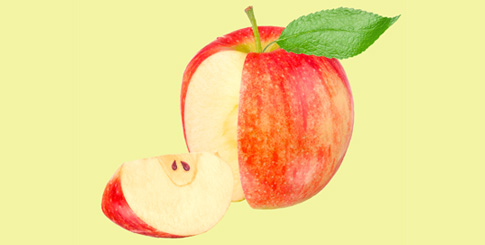Kanzi, a blend of Gala and Braeburn, offers a well-balanced sweet and sour flavor. The new variety reportedly brought in more dollars and increased volume in the first four months of the 2016-17 season than any other apple. And Kanzi is just getting started—growers harvested their first major crop last fall in Washington and Michigan.
In another year or two, Mascari says to watch for Evercrisp, which has a sweet flavor, texture like a Honeycrisp, looks like a Fuji, and has a bonus: it’s bred for more lengthy storage capabilities.
In the Northeast
Pennsylvania and New York produce the most apples in the Northeast region. As one of the U.S.’s top five apple-growing states, Pennsylvania applied to make the apple its state fruit in 2016—the sixth state to do so in the nation.
Not surprisingly, the Big Apple’s home state is a major producer, ranking second in the nation with an average output of nearly 30 million bushels from close to 700 commercial growers. The state is divided into six growing districts and the top five counties by production are Wayne, Ulster, Orleans, Niagara, and Clinton.
New York Apple Sales ships domestically to retailers in the Northeast, Southeast, Southwest and Midwest, especially Costco, Walmart, and Sam’s Club.
Internationally, apples are shipped to Israel, the Philippines, Singapore, India, and Vietnam, but Jim Allen, vice president of marketing for New York Apple Sales, Inc. in Castleton, says this market has slowed in the past few years.
“Weather is always a factor, but we’re very pleased we’ve had a normal spring—which means a normal fruit-set season—so we have every reason to be optimistic,” Allen says.
Trending & new varieties
Allen says the most popular varieties the company handles are McIntosh, Gala, and Honeycrisp, while McIntosh remains a legacy variety in the area, he notes.
Cornell University’s well-known breeding program is responsible for popular varieties like RubyFrost and SnapDragon; both seem to love the state’s climate, which shows in the volume and quality of the fruit.
“RubyFrost, SnapDragon, and Smitten in New York, Michigan, and Washington, and Koru out of New Zealand have a lot of potential,” shares Allen. “We work together to grow these as club varieties.”
Club varieties are patented, trademarked, and controlled so that only a select group of growers can produce and sell them. Yet the crop volume continues to rise as growers transition to higher-density plantings, according to Allen. The number of trees planted in New York has increased dramatically in the last several years in response to climbing demand.



